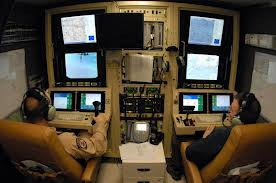“Strike Enabled” Armed Drones and UAVs, A Multibillion Dollar Export Business
Control Process Must Be Opened To Civil Society Groups And Drone Victims

Details of a US-initiated proposed control agreement on the export and use of armed drones have been announced. The Joint Declaration on the Export and Subsequent Use of Armed or Strike-Enabled Unmanned Aerial Vehicles (UAVs), signed by 48 nations including the UK, sets out very briefly – on less than one side of paper – five broad principles to be adhered to in relation to the export and use of armed drones. According to an accompanying Fact Sheet issued by the US State Department, The “will serve as a basis for discussions on a more detailed set of international standards… which the United States and its partners will convene in spring 2017.”
It is welcome that, on paper at least, the US and the international community now recognise, as the Joint Declaration puts it, the “misuse of armed or strike-enabled UAVs could fuel conflict and instability, and facilitate terrorism and organized crime.” Despite this however there are real problems with the Declaration. Not least that while the document talks about the “responsible use” of armed drones, this is not defined in any clear or meaningful way other than by merely stating that drones are subject to international law.

As has been very clear over the past decade, there are serious disagreements between the US and the international community as well as international law experts as to how aspects of the growing use of armed drones adheres to international law. As Rachel Stohl of the Stimson Center argues, with such a broad-brush approach, many are worried that the declaration not only provides “a blank check” for future use and export of drones, but that it also serves to effectively legitimize past US drone use.
Stohl also points out that the document has been weakened since the original draft was circulated among potential signatory States. Changes have been made to the text which open up large loopholes such as the addition of the sentence “none of which should be construed to undermine the legitimate interest of any State to indigenously produce, export, or acquire such systems for legitimate purposes.” The need for transparency mechanisms to have “due regard to national security considerations” has also been added to the document.
While some have been criticising the document for being too weak, others such as drone advocate, retired Air Force General David Deptula, have attacked the proposed agreement for treating drones as deserving of particular attention. “The singling out of drones in the State Department declaration does more harm than good by lending undue credibility to adversary propaganda that these aircraft somehow represent “Terminator-like” machines that warrant extra regulation” he wrote this week.
The impetus for the Joint Declaration comes in part from the US drone lobby who say that the current rules such as the Missile Technology Control Regime (MTCR) “hurt industry“. The Defence press reported this week that lobbyists see the agreement as a chance to boost US drone exports, which currently lag behind that of Israel. It is notable that both Israel and China have not signed the declaration at this stage. State Department officials expressed hope they would take part in the discussion scheduled for next year.
Over the coming year there will no doubt be lots of wheeling and dealing behind the scenes over this new initiative. It is possible that the agreement will end up as little more than window dressing with no real impact, particularly if a new muscular US administration decides to jettisons the whole process in a post-Obama world. However, if States sign a weak agreement based on the current draft it could help to erode what little control there already are on the proliferation and use of such systems.
So far the whole process has been taken place behind closed doors with seemingly little input from experts and civil society groups. While this is a State level process, there is concern that officials charged with developing the new regime have little understanding of the issues. Earlier this year I was part of a small delegation that met with Foreign and Commonwealth Office officials to talk about the need to strengthening controls on the export of armed drones. It quickly became apparent however that the level of knowledge and understanding of the issue among officials was not far off non-existent. Our concern is that as this agreement has been developed in such a rush – partly by the Obama’s administration’s concern to have something in place before he leaves office – officials are only turning only to the drone industry for advice and help.
NGOs, academics and human rights groups have been working on this issue for many years and it should be axiomatic that government officials consult widely among those with expert knowledge of the issue. The voice of the many victims of drone strikes should also be heard in this process. In the end, it is vital that public concerns about the growing use of armed drones are fed into this process to ensure that there is a strong and sustainable agreement that ensures proper controls over armed drones.

